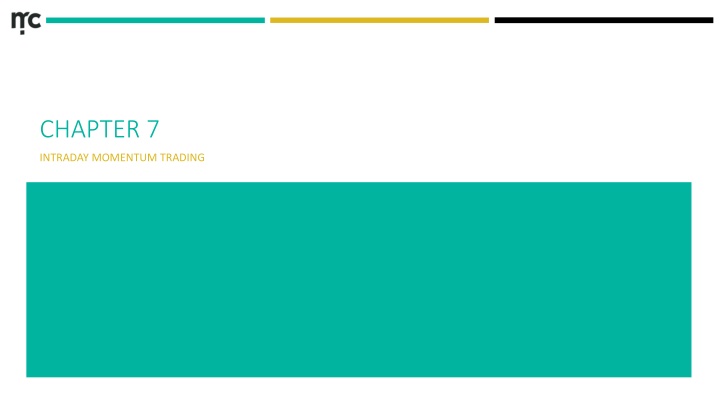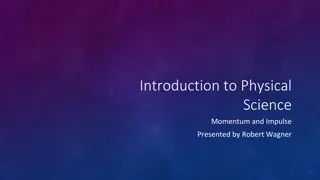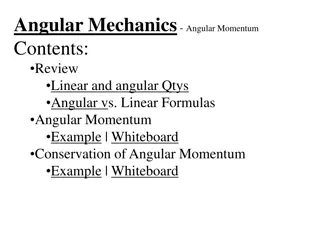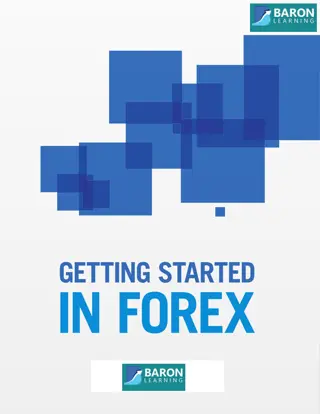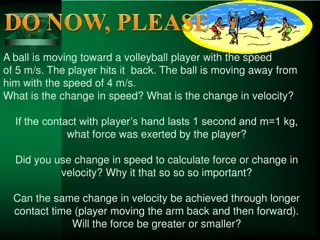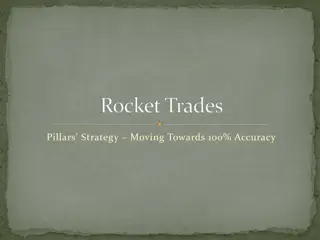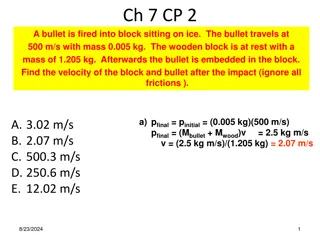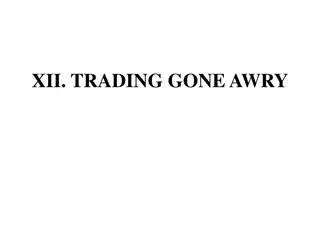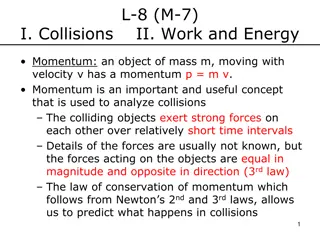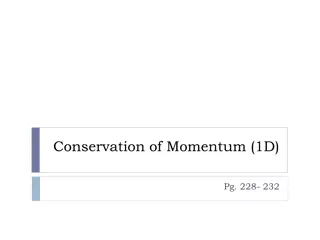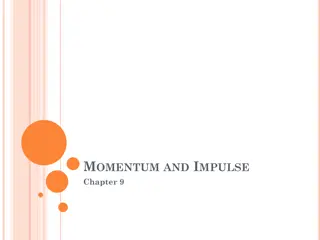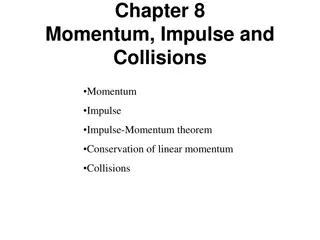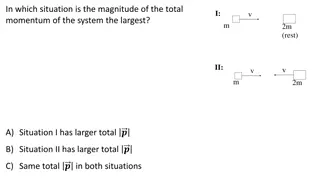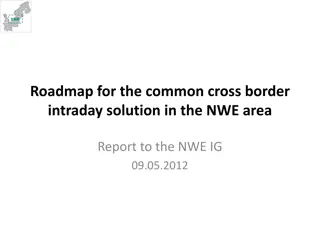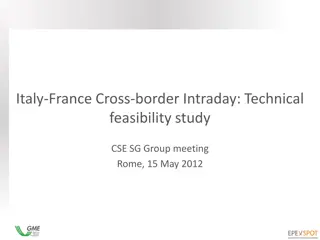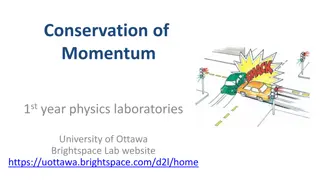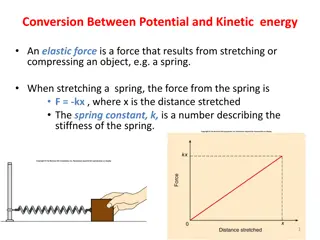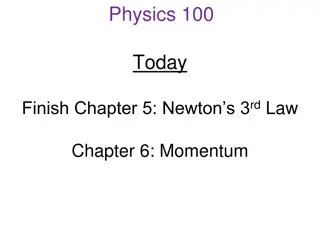Intraday Momentum Trading Strategies
Intraday momentum trading involves utilizing various factors such as earnings announcements, analyst recommendations, and macroeconomic news to trigger trading strategies. Strategies like Open Gap Strategy and Post Earnings Announcement Drift can be effective in capturing short-term market movements. Leveraged ETF and High-Frequency strategies are also explored for generating momentum in financial markets. Understanding these strategies can help traders capitalize on market trends efficiently.
Download Presentation

Please find below an Image/Link to download the presentation.
The content on the website is provided AS IS for your information and personal use only. It may not be sold, licensed, or shared on other websites without obtaining consent from the author.If you encounter any issues during the download, it is possible that the publisher has removed the file from their server.
You are allowed to download the files provided on this website for personal or commercial use, subject to the condition that they are used lawfully. All files are the property of their respective owners.
The content on the website is provided AS IS for your information and personal use only. It may not be sold, licensed, or shared on other websites without obtaining consent from the author.
E N D
Presentation Transcript
CHAPTER 7 INTRADAY MOMENTUM TRADING
OVERVIEW Intraday momentum shares the same causes except for persistence of roll return Intraday Momentum strategies can be triggered by many factors. Some factors are Earnings Announcements Analyst recommendation changes Macro economic news Actions of large funds Some causes on the smallest time scale Imbalance of bid and ask sizes Changes in order flow Nonuniform distribution of stop orders
STRATEGY Open Gap Strategy Post Earnings Announcement Drift Sometimes works on futures and currencies Buy when instrument gaps up, short when they gap down Most currency markets are closed 5pm Friday to 5pm Sunday, forming a natural gap Enter at the market open after earnings announcement was made after the previous close. Buy stock if return is very positive, short if negative Liquidate at the end of the day Close price often very different than open price Overnight returns tend to be negative To back test, we need to have historical data of the previous earnings announcements Stop orders get triggered Execution of these stop orders cause momentum
DRIFT DUE TO OTHER EVENTS Earnings Guidance Same store sales Analyst ratings and recommendation changes Airline load factors In general, and announcement that prompts a reevaluation of the market value of a company should change its price.
LEVERAGED ETF STRATEGY Large changes in the market index generates momentum in the same direction for both leveraged long or short ETFs Positive change, a short ETF experiences a decrease in equity, and its sponsor would need to reduce its short positions. Therefore is would need to buy stocks, just as a long ETF would. An example of this strategy is: Buy DRN if the return from the previous day's close to 15 minutes before today's market close is greater than 2%, sell if the return is less than 2%. This strategy is based on the momentum of the underlying assets
HIGH FREQUENCY STRATEGIES VERY SPEEDY
HIGH FREQUENCY STRATEGIES The basic idea of high frequency momentum strategies is: if the bid size is larger than the ask size expect price to tick up and vice versa Bid > Ask => Price tick up Bid < Ask => Price tick down This effect is stronger for lower volume stocks
HIGH FREQUENCY STRATEGIES Pro-rata based markets Bid-Ask Spread is larger than 2 ticks Join the bid immediately when original bid is much larger than the ask size Place buy order at best bid plus one tick Sell at best ask minus one tick Once the bid price moves up one or more ticks, sell at a profit If the price doesn t move we can still sell at the loss of only commission
MOMENTUM IGNITION Momentum Ignition In time priority markets in situations where the best bid and best ask prices are very similar, we can create the illusion of bid-ask size imbalances. Warning, people might call our bluff and fill our buy order. This is bad If we see large buy orders and suspect that someone is attempting a momentum ignition strategy we can call their bluff and fill their large buy order Place buy limit order at best bid. This creates the illusion of buying pressure Place small sell limit order at best ask This tricks traders into buying because they anticipate an uptick Cancel the buy order Some traders then will sell back at a loss To Recognize if someone is attempting this strategy pay attention to how often a large buy order is being canceled. Buy back the cheap stocks
STOP HUNTING IN CURRENCY MARKETS In currency markets once support levels are breached prices will go down, and similarly once resistance levels are breached prices go up Support and resistance levels are reported daily by banks and brokerages These price changes occur due to large number of stop orders placed at or near the support and resistance levels The idea is that once the price drops below the support level, sell orders get triggered causing prices to go down further Create large sell orders when near support, drive the order below the support level, buy back at a profit. Vice versa for resistance levels
ORDER FLOW Order flow is a transaction volume. For stocks and futures markets, monitor and record every tick. Determine whether a transaction took place at the bid (negative order flow) or at the ask (positive order flow) If a trader buys 100 units the order flow is 100. If they instead sell 100 units the order flow is 100 Order flow information is a good predictor of price movements. This is because market makers can distill important information from the order flow and set the bid ask prices accordingly Difficult to use this strategy for currencies markets, so we may have to trade currency futures instead. Ex: A major hedge fund learns about a major piece of breaking news, and immediately submit a large market order of the same sign. A market maker monitoring the order flow will deduce the large one-directional demand indicates the presence of informed traders and adjust their bid-ask prices to protect themselves. Once the order flow is calculated compare to the average order flow over some look back period
KEY POINTS Intraday momentum strategies do not suffer from many disadvantages of interday momentum strategies, but they retain some key advantages Rebalancing of leveraged ETFs near the market close causes momentum in the underlying index in the same direction as the market return from the previous close "Breakout" momentum strategies involve a price exceeding a trading range Many high-frequency strategies involve the imbalance between bid and ask sizes, an imbalance that is sometimes artificially created by the high-frequency traders themselves The opening gap strategy is a breakout strategy that works for some futures and currencies Breakout momentum may be caused by the triggering of stop orders Stop hunting is a high-frequency trading strategy that relies on triggering stop orders that typically populate round numbers near the market price Many kinds of corporate and macroeconomic news induce short term price momentum Order flow can predict short-term price movement in the same direction Index composition changes induce momentum in stocks that are added to or deleted from the index
